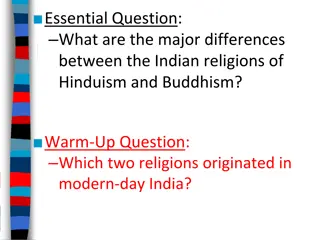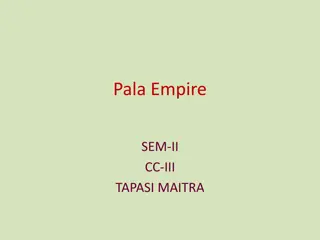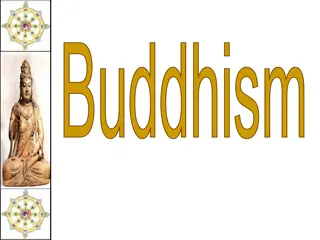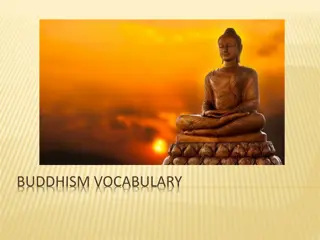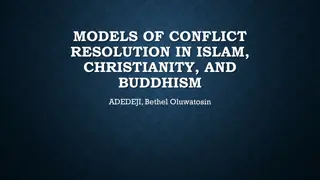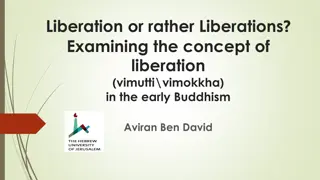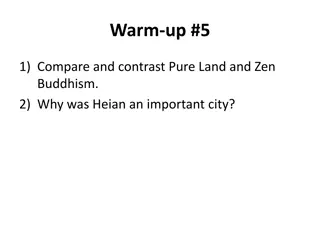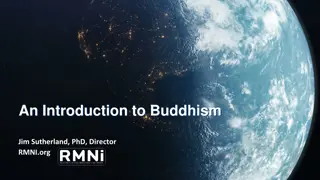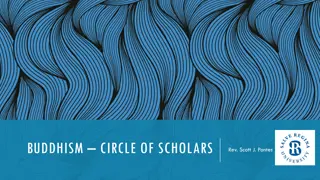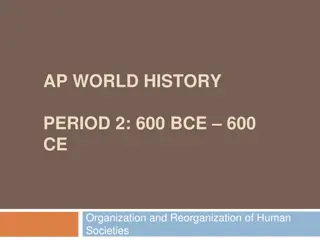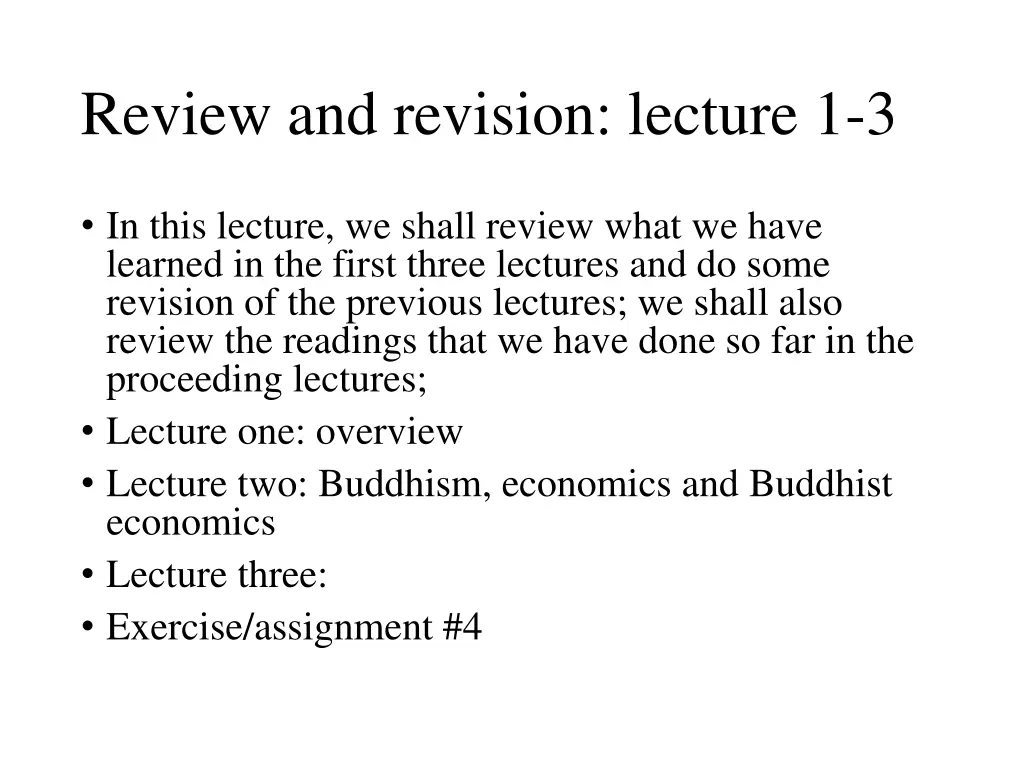
Exploring Human Life, Economics, and Philosophy: Review and Reflection
Delve into the intertwining of human life, economics, and philosophy through a review of the first three lectures covering topics such as Buddhism, economic systems, moral integrity, and the ideas of Adam Smith and Karl Marx. Understand the complementary nature of Buddhist practices and economic pursuits in bringing about holistic well-being.
Download Presentation

Please find below an Image/Link to download the presentation.
The content on the website is provided AS IS for your information and personal use only. It may not be sold, licensed, or shared on other websites without obtaining consent from the author. If you encounter any issues during the download, it is possible that the publisher has removed the file from their server.
You are allowed to download the files provided on this website for personal or commercial use, subject to the condition that they are used lawfully. All files are the property of their respective owners.
The content on the website is provided AS IS for your information and personal use only. It may not be sold, licensed, or shared on other websites without obtaining consent from the author.
E N D
Presentation Transcript
Review and revision: lecture 1-3 In this lecture, we shall review what we have learned in the first three lectures and do some revision of the previous lectures; we shall also review the readings that we have done so far in the proceeding lectures; Lecture one: overview Lecture two: Buddhism, economics and Buddhist economics Lecture three: Exercise/assignment #4
Human life, economics and Buddhism: as we mentioned, despite that Buddhism and economics are two very different topics, with one is about spirituality and the other materials, all the differences are linked by one important factor: human life: happiness, wellbeing, abundance etc.; Economics Human life Politics Philosophy Buddhism
Pururtha: this is the object of human life according to the ancient Indian philosophy/religion; there are mainly 4 aspects of life: kama sensual pleasure, artha material/economic prosperity, dharma moral integrity, and mok a spiritual salvation; so in a comparison, Buddhist practice and economic pursuit are not conflicting but complementary; Moral integrity Human pursuits Spiritual liberation Economic prosperity Sensual pleasure
Adam Smith and Karl Marx: for more details regarding the different ideas of Adam Smith and Karl Marx, please read and reread A Little History of Economics, chapter 6 (pp. 31-36) and chapter 10 (pp. 55-60);
Three economic systems: as we mentioned, because the problems within the two dominant economic systems (market and planned economic systems), modern economists and policymakers outlined and implemented a mixed economic system: market economic ideas with timely but necessary interventions;
Normative and positive economics
General economics and Buddhist economics: the difference of emphasis
Buddhist economics: holistic model, as we have discussed, is a mixture of general economics and Buddhist economic ideas; rather than concentrating merely on profits and efficiency, this model also takes into considerations of the welfares of people, natural resources and the interdependence of human beings and living environment, and many other aspects; (please read textbook pp. 2-5)
Positive, normative & Buddhist economics: as we mentioned, in positive economics, all the important economic facts and factors are studied so as to have a full and objective understanding of economic performance and economic system; but normative economics tries to make economy work for everyone in the society, not only those lifeless economic indicators or economic figures; Buddhist economics takes a middle way approach, providing a holistic economic system: a working economic system works for people; Positive economics Buddhist economics Normative economics
Summary and facts check-1 In the lecture, we have summarized the important ideas, concepts and theories we have covered in the first three lectures; those include: Although the emphases are different, both economics and Buddhist economics are linked by human life wellbeing and happiness; for example, in ancient Indian philosophy, one of 4 important human pursuits is material or economic prosperity; this idea is shared by general economics and Buddhist economics; If you remember, we also mentioned that Alfred Marshall, the author of first modern textbook of economics, started his book by a discussion of the relationship between human wellbeing and economics;
Facts check-2 Two economic systems: market and planned (some time called command economy) economic systems are important; As we mentioned, because the ideas advanced by Adam Smith and Karl Marx, those two economic thinkers are generally regarded as the forerunners of market economic system and planned economic system respectively; this assumption is generally true but should be considered in a more analytical way; The middle way approach: because of the problems with the said two economic systems, a third way or middle way approach came into existence; that is the mixed economy of market ideas with good plans;
Facts check-3 Also, studies of economic factors such as GDP, business performance, consumption indicators and prices of goods etc. are the field of positive economics, whereas issues concerning economic ethics such as fairness, inequality/equality, and the gap between rich and poor and the economic impact are the studies of normative economics; Although Buddhist economics is more leaning towards normative economics, ideas of sustainable development and interdependence can also be seen from positive economic perspective;
Facts check-4 The holistic economic model as advanced by Clair Brown suggests that Buddhist economic model sees economic development in a broad picture which includes the ideas of interdependence, human welfare as well as the protection of natural environment, among other factors; The above are some important ideas we have discussed but I am sure you will find more interesting aspects of Buddhism and economics, in particular if you read course materials and books regularly; so do read course materials, the textbook and the reference; This should be enough for today s lecture; any questions, please let me known!
Coursework/assignment #4 Do the following assignment and submit it via email (chuanqing@bcs.edu.sg) to me by 5:00 pm, on 30th September (Wednesday); as usual, please send the assignments of the two courses (Buddhism and Economics & Introduction to Buddhist Logic) together in one Word doc. file; Assignment: In Buddhist economics, one important and relevant doctrine is the right livelihood (one of the noble 8fold path). Can you write a short article: 200-300 words (please do not exceed 500 words), to explain the Buddhist doctrine of right livelihood and the possible economic implications in it;




